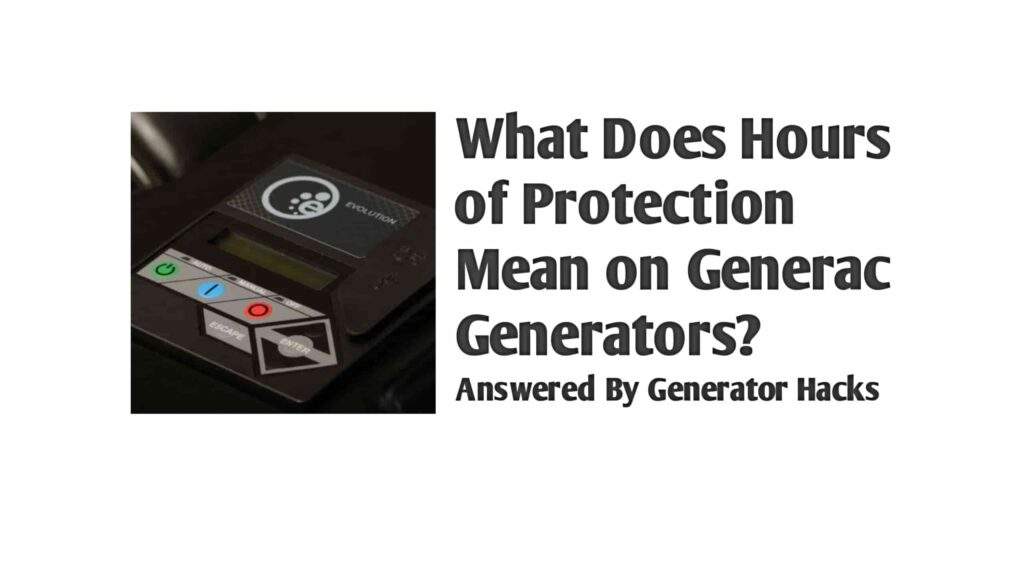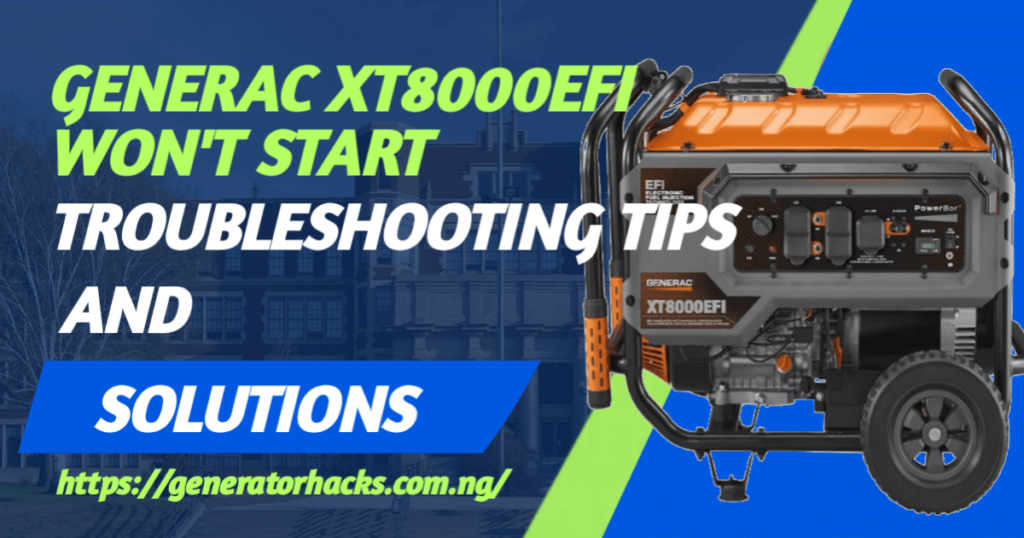As an Amazon Associate, we earn from qualifying purchases. This does not affect the price you pay or the quality of the products you buy. For more information, please read the full affiliate disclosure here.
Imagine a power outage in the dead of night, and you rely on your Generac generator to restore electricity to your home. But what if, instead of the comforting hum of your generator, you encounter a low voltage error?
The frustration and confusion can be overwhelming. Fear not, for in this comprehensive guide, we will delve into the world of Generac generators, shedding light on the low voltage error and providing you with the knowledge you need to diagnose and resolve this issue fast.
Understanding the Importance of Voltage Regulation on Generac Generators
Voltage regulation is the process of maintaining a consistent and stable voltage output to ensure that electrical devices operate within their designed parameters. In the context of Generac generators, voltage regulation plays an important role in delivering reliable and high-quality power to your home during utility outages or in remote areas where grid access is limited.
When it comes to electrical appliances and equipment, they are designed to operate within a specific voltage range. Deviations from this range can have detrimental effects on their performance, efficiency, and even their lifespan. High voltages can cause excessive heat, overload circuits, and lead to equipment failure, while low voltages can result in insufficient power supply, leading to malfunctions and potential damage.
Generac generators are designed with built-in voltage regulators to maintain a stable output voltage, typically at 120/240 volts for residential applications. The voltage regulator continuously monitors and adjusts the generator’s internal electrical systems to ensure that the voltage remains within an acceptable range.
During normal operation, the voltage regulator measures the output voltage and compares it to a reference voltage. If there is any deviation, the regulator adjusts the excitation of the generator’s alternator, which controls the output voltage. This feedback loop ensures that the generator responds to changes in load and maintains a stable voltage output, regardless of the connected appliances or power demands.
The importance of voltage regulation cannot be overstated, especially when it comes to sensitive electronic devices. Many modern appliances, such as computers, televisions, and refrigerators, rely on precise and stable voltage inputs to function optimally. Fluctuations in voltage can disrupt their performance, leading to data corruption, system crashes, or even irreversible damage.
Furthermore, voltage-sensitive equipment such as medical devices, laboratory instruments, and telecommunications systems require a stable power supply to ensure accurate readings, reliable operation, and patient safety. In these critical applications, voltage regulation is of utmost importance to maintain the integrity and functionality of the equipment.
Now that we understand the significance of voltage regulation, we can delve into the low voltage error on Generac generators and explore the causes, diagnostic steps, and potential solutions. By gaining a comprehensive understanding of this issue, you will be better equipped to troubleshoot and resolve low voltage errors, ensuring the continued reliability and performance of your Generac generator.
Also Read:- Understanding Generator Voltage Regulators: Types and How They Work
Causes of Low Voltage Error on Generac Generators
The low voltage error can stem from various factors. Understanding these causes is the first step towards troubleshooting and resolving the issue effectively.
1. Fuel Supply Issues: Insufficient fuel or a clogged fuel filter can lead to a low voltage error. Ensure that your generator has an adequate fuel supply and that the fuel is clean and free from contaminants.
2. Faulty Voltage Regulator: The voltage regulator plays a vital role in maintaining a consistent voltage output. A malfunctioning voltage regulator can result in low voltage errors. Regular inspection and testing of the voltage regulator are necessary to ensure its proper functioning.
3. Wiring Problems: Faulty or loose connections in the wiring system can lead to voltage drops and low voltage errors. Inspect the wiring connections, including the main power lines, transfer switch, and internal connections, for any signs of damage or loose connections.
4. Overloading and High Power Demand: Generac generators have a rated power output capacity. If the load exceeds the generator’s capacity, it can cause voltage fluctuations and trigger the low voltage error. Ensure that you distribute the load evenly and avoid exceeding the generator’s power limits.
5. Engine Malfunction: A malfunctioning engine can result in poor power generation and low voltage issues. Regular maintenance and servicing of the generator’s engine are essential to ensure its optimal performance.
6. Other Potential Factors: In addition to the above, other factors such as faulty circuit breakers, worn-out capacitors, or issues with the Automatic Voltage Regulator (AVR) can contribute to low voltage errors. A thorough diagnosis is necessary to identify the specific cause.
Diagnosing the Low Voltage Error on Generac Generators
To effectively resolve the low voltage error, a systematic approach to diagnosis is crucial. Here are the key steps to follow:
1. Checking Fuel Levels and Supply: Start by inspecting the fuel levels in your Generac generator’s tank. Ensure that there is an adequate fuel supply to meet the generator’s running requirements. If the fuel level is low, refill it with clean and uncontaminated fuel.
Additionally, examine the fuel lines and filters for any clogs or blockages that may impede fuel flow. If you notice any issues, clean or replace the filters as necessary.
2. Inspecting the Voltage Regulator: The voltage regulator is responsible for maintaining a stable voltage output. Inspect the voltage regulator for any signs of damage or malfunction. Use a multimeter to measure the voltage output and compare it to the manufacturer’s specifications. If the voltage output is significantly lower than expected, it may indicate a faulty voltage regulator that requires repair or replacement.
3. Evaluating the Wiring System: Check the wiring system of your generator for any loose connections, frayed wires, or damaged components. Ensure that all connections are secure and free from corrosion. Pay close attention to the main power lines, transfer switch, and internal wiring. Repair or replace any damaged wiring to restore proper voltage flow.
4. Analyzing the Load and Power Demands: Verify that the load connected to the generator does not exceed its rated power capacity. High power demands can cause voltage drops and trigger low voltage errors. Distribute the load evenly across circuits and avoid overloading the generator. Consider disconnecting non-essential appliances to reduce the load and allow the generator to operate within its limits.
5. Examining the Engine and Other Parts: Inspect the engine for any signs of malfunction, such as abnormal noises, oil leaks, or poor performance. Ensure that the engine’s air filters, spark plugs, and other components are clean and in good condition. Perform regular maintenance tasks, including oil changes and filter replacements, as recommended by the manufacturer.
How to Resolve the Low Voltage Error on Generac Generators
Once you have identified the specific cause of the low voltage error, take appropriate measures to resolve the issue:
1. Fuel Related Solutions: If the low voltage error is caused by fuel supply issues, ensure an adequate fuel supply and clean fuel filters. If necessary, consult a professional for assistance in cleaning or replacing clogged filters.
2. Voltage Regulator Repair or Replacement: In the case of a faulty voltage regulator, consider consulting a qualified technician to repair or replace the regulator. They will have the expertise and tools required to handle this delicate component.
3. Addressing Wiring Issues: Repair or replace any damaged wiring connections or components. Ensure that all connections are secure and free from corrosion. Seek professional help if you’re uncertain about handling complex wiring tasks.
4. Managing Power Demand: Distribute the load evenly across circuits, avoiding overloading the generator. Consider disconnecting non-essential appliances to reduce the load on the generator and maintain a stable voltage output.
5. Engine Troubleshooting and Maintenance: If the low voltage error is due to an engine malfunction, consult a professional technician to diagnose and repair the issue. Regular engine maintenance, including oil changes, filter replacements, and periodic inspections, is vital to prevent future problems.
Also Read:- How to Fix a Low Voltage Generator in 3 Easy Ways
Why Seek Professional Help
While some low voltage error issues can be resolved through DIY troubleshooting and maintenance, it’s important to recognize when it’s time to seek professional assistance.
If you’re unsure about any aspect of the diagnosis or if the problem persists despite your best efforts, consult a certified Generac service provider.
Certified Generac service providers have the expertise and specialized knowledge to diagnose and repair complex generator issues, ensuring the long-term reliability of your equipment.
Final Thought
Understanding the low voltage error on Generac generators and knowing how to troubleshoot and resolve it are essential for every generator owner.
By familiarizing yourself with the causes, diagnostic steps, and potential solutions outlined in this guide, you can effectively address the low voltage error and ensure that your Generac generator continues to provide reliable power during outages.
Remember, regular maintenance and prompt resolution of any issues will keep your generator in optimal condition and ready to serve you when you need it most.
Share


